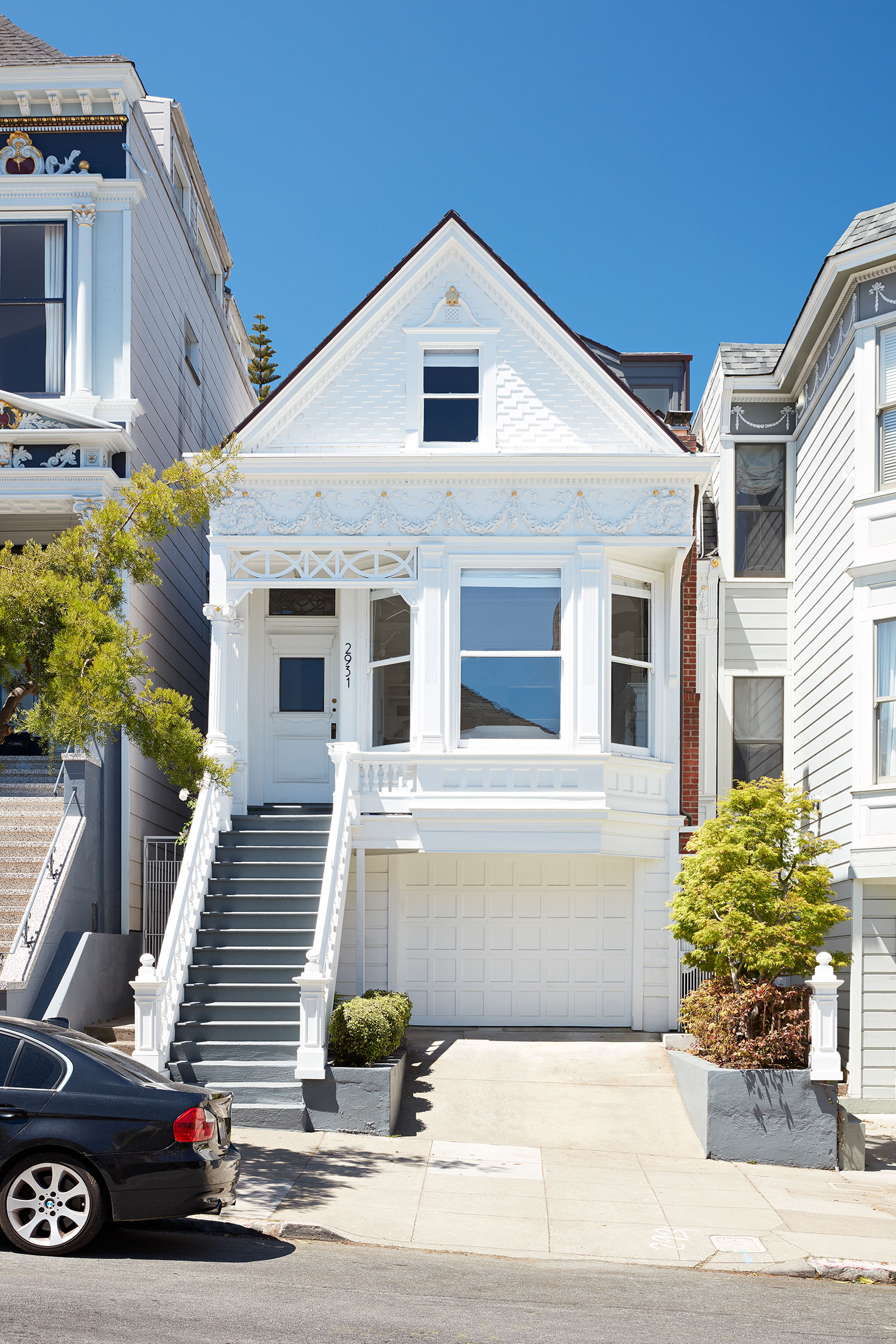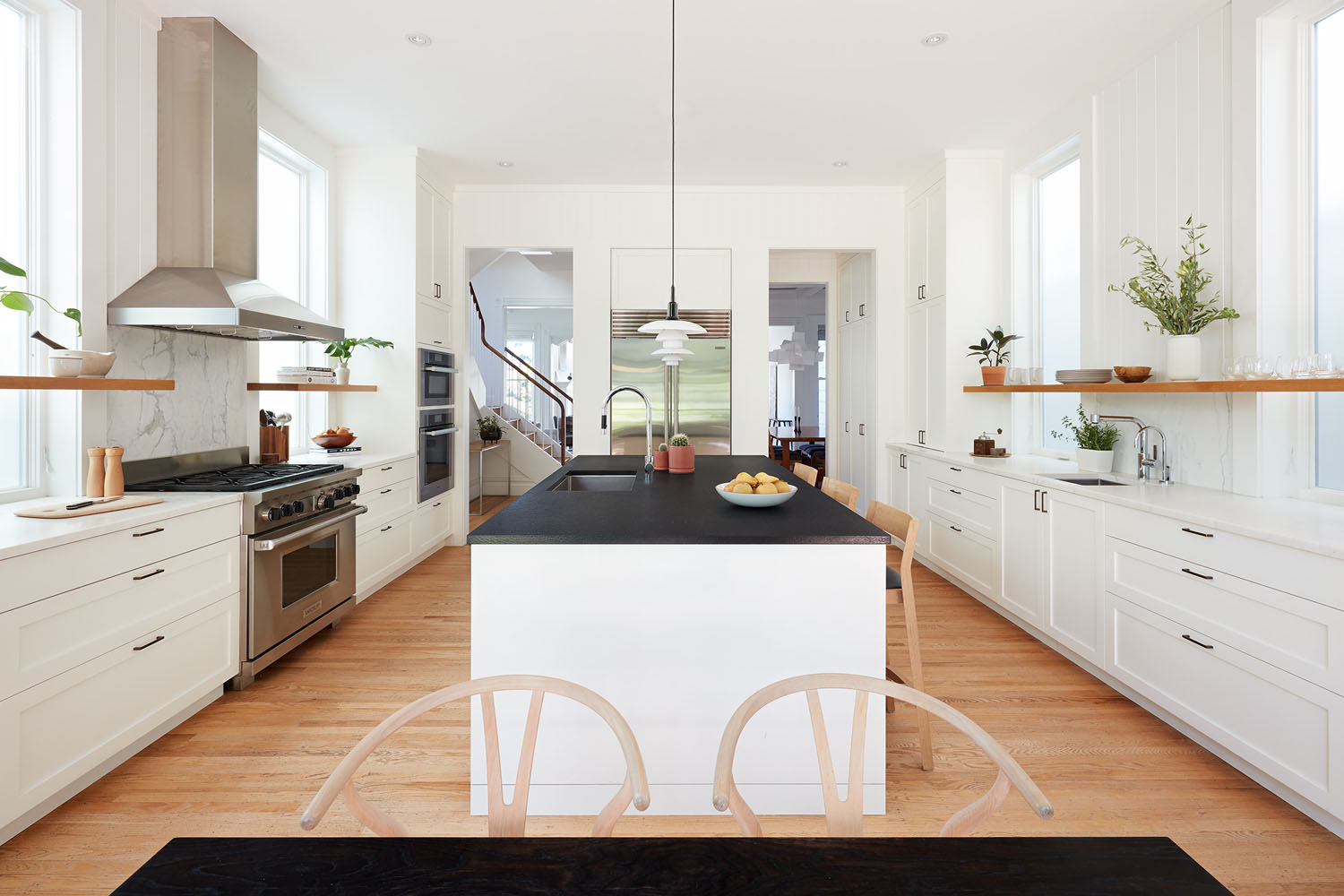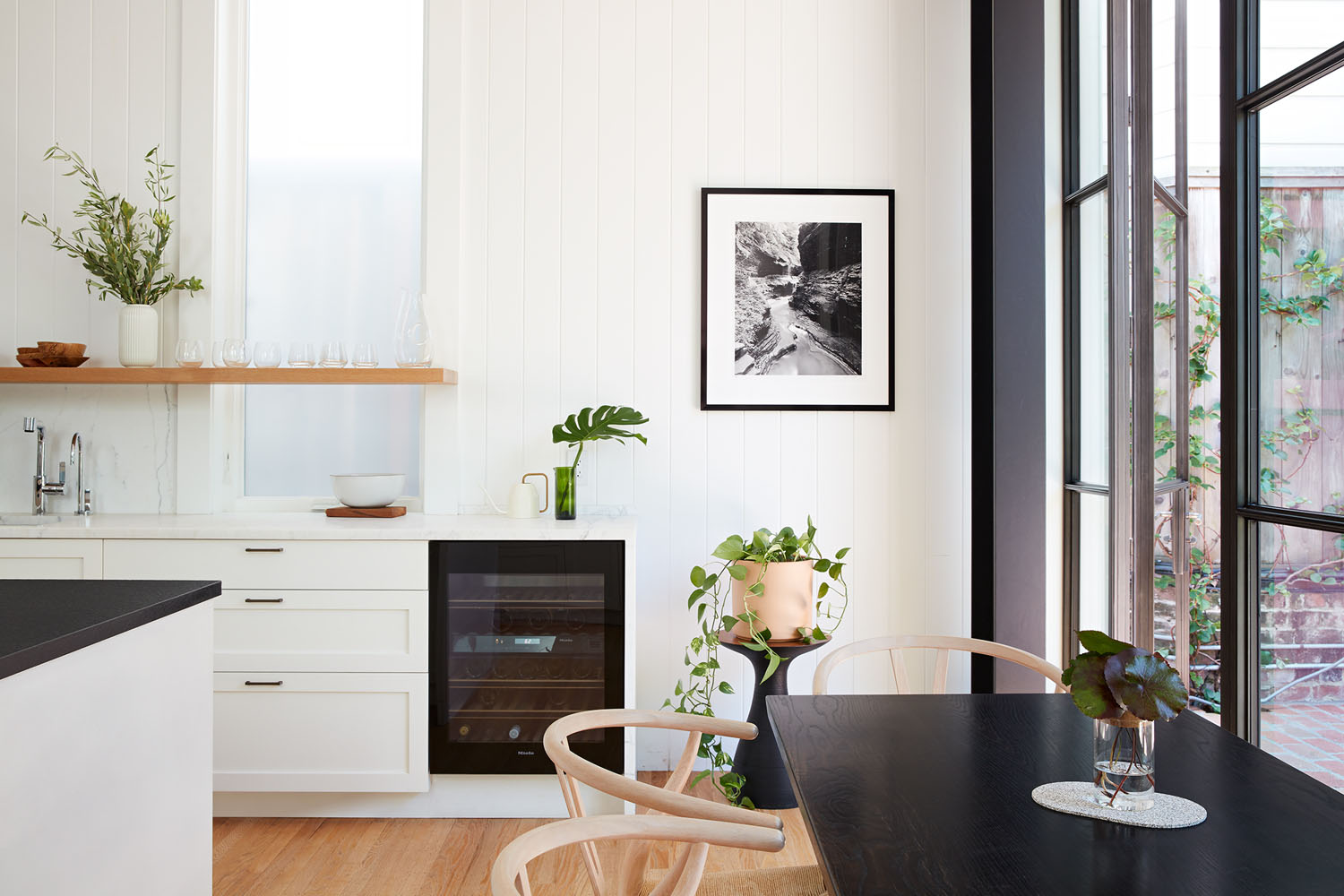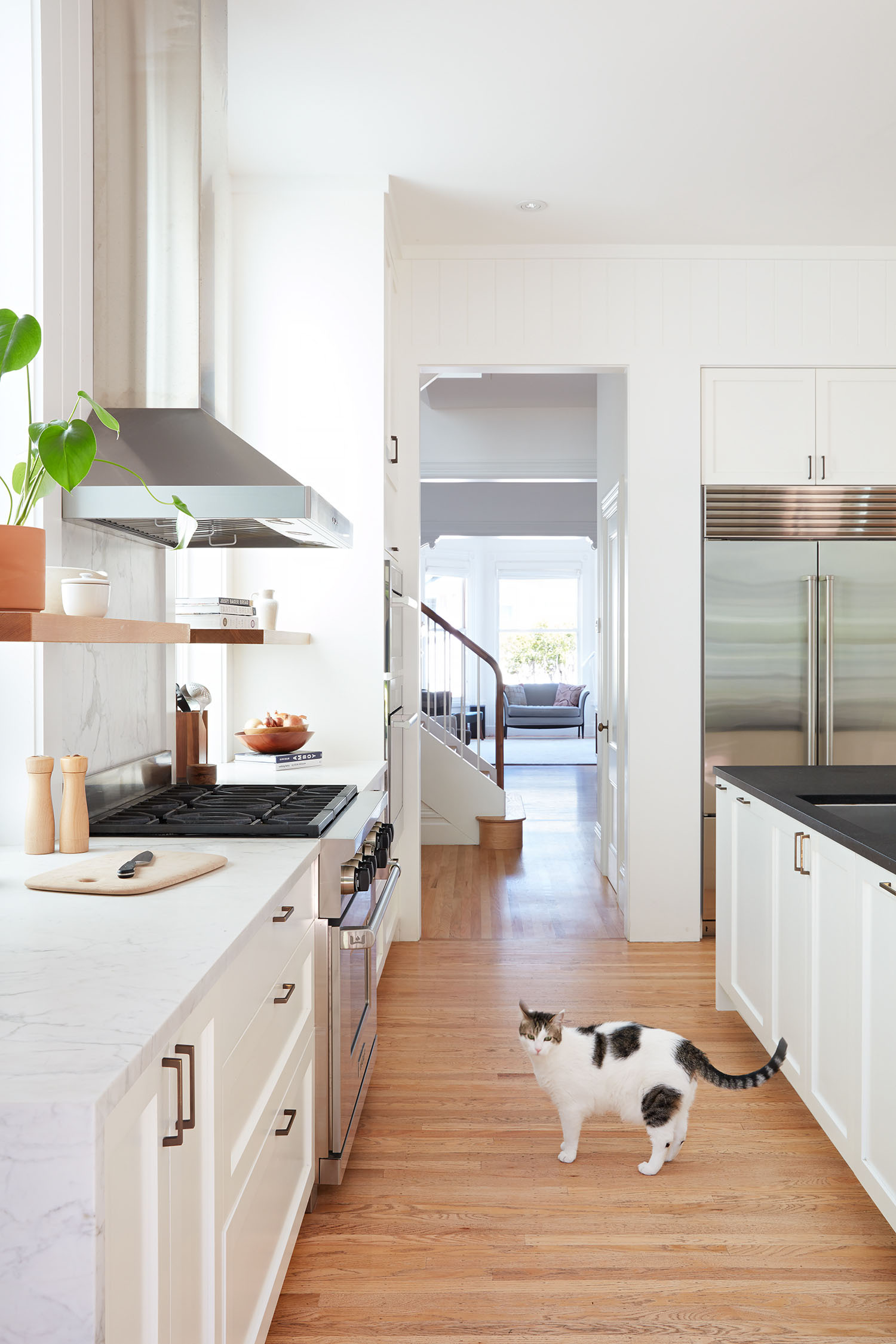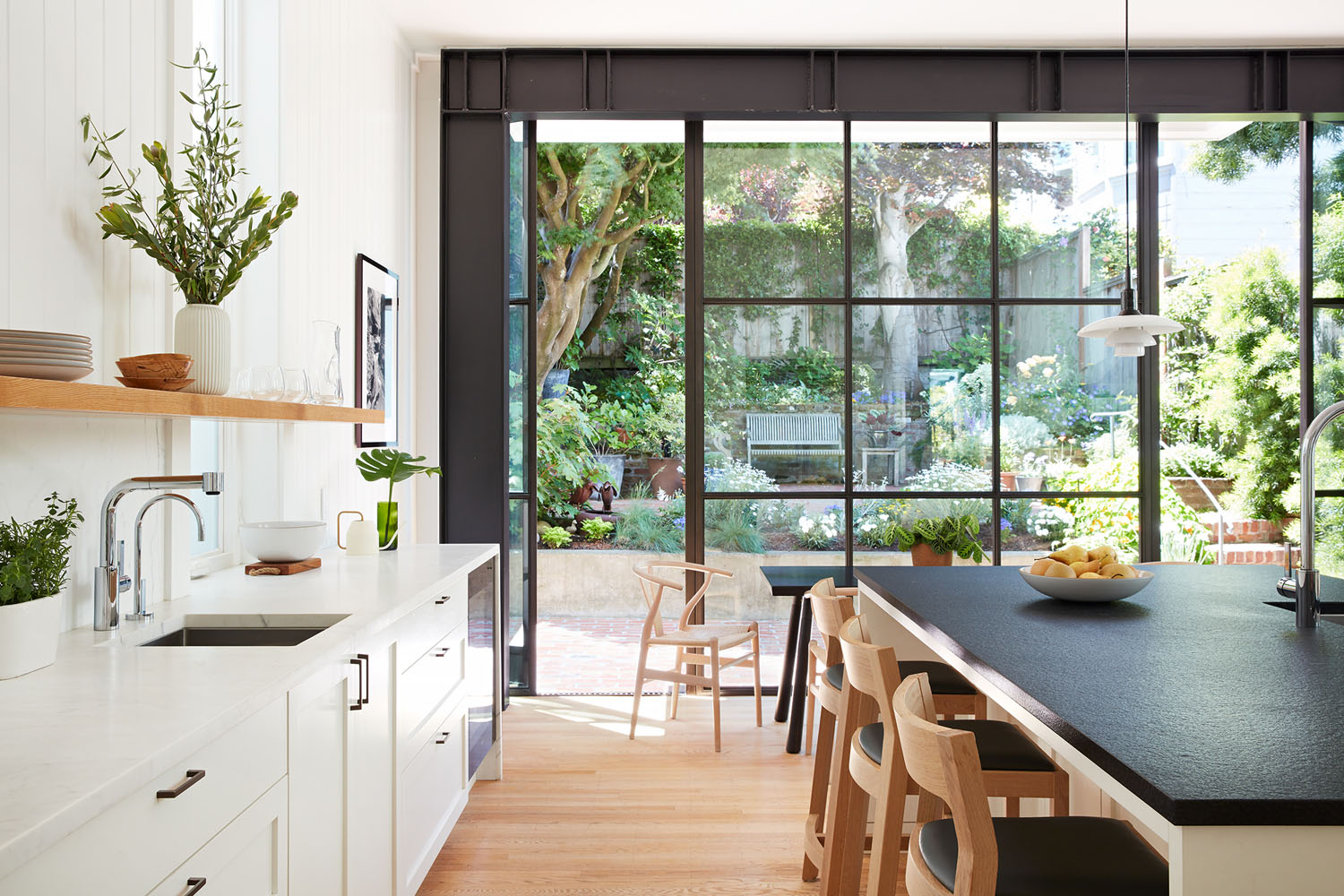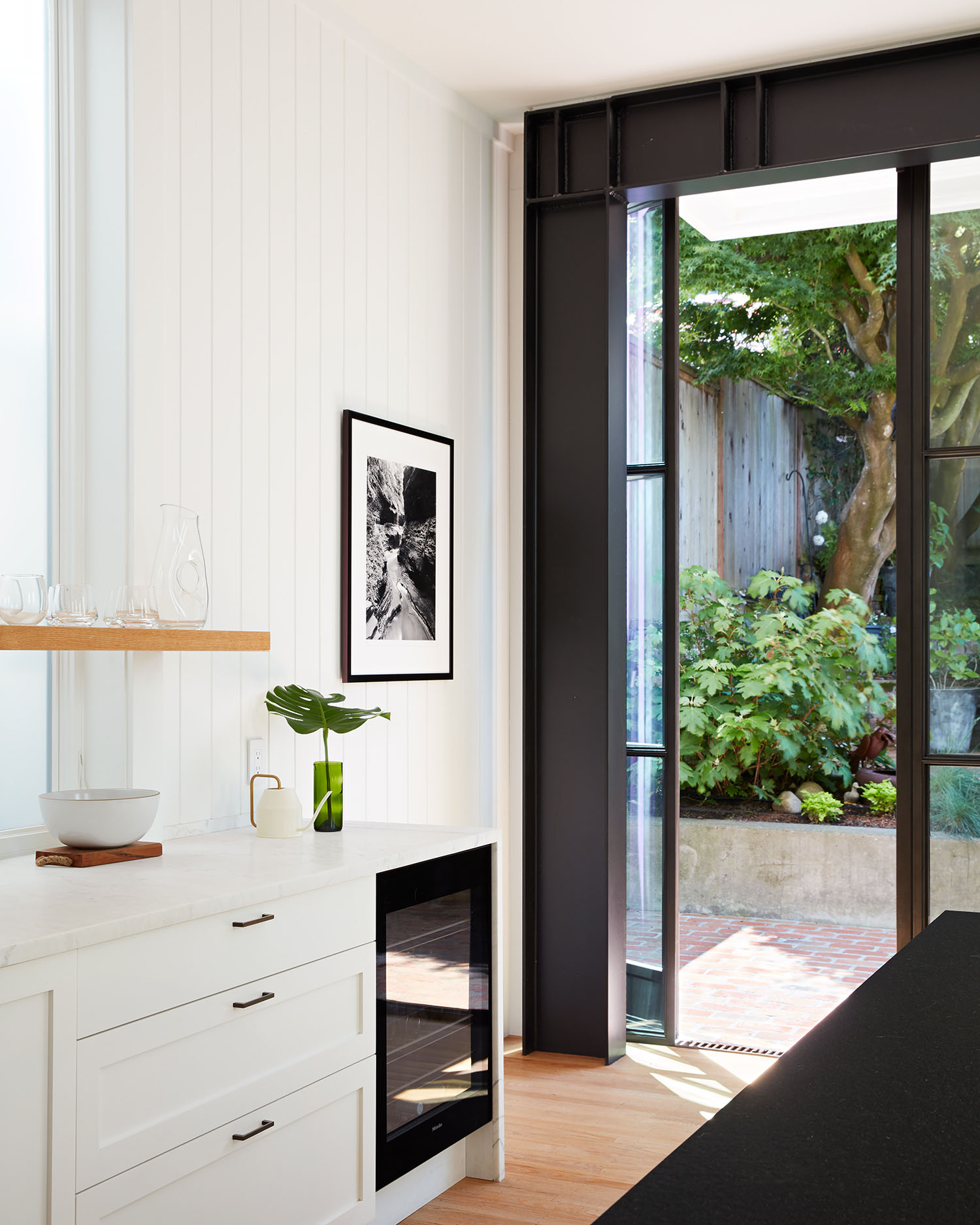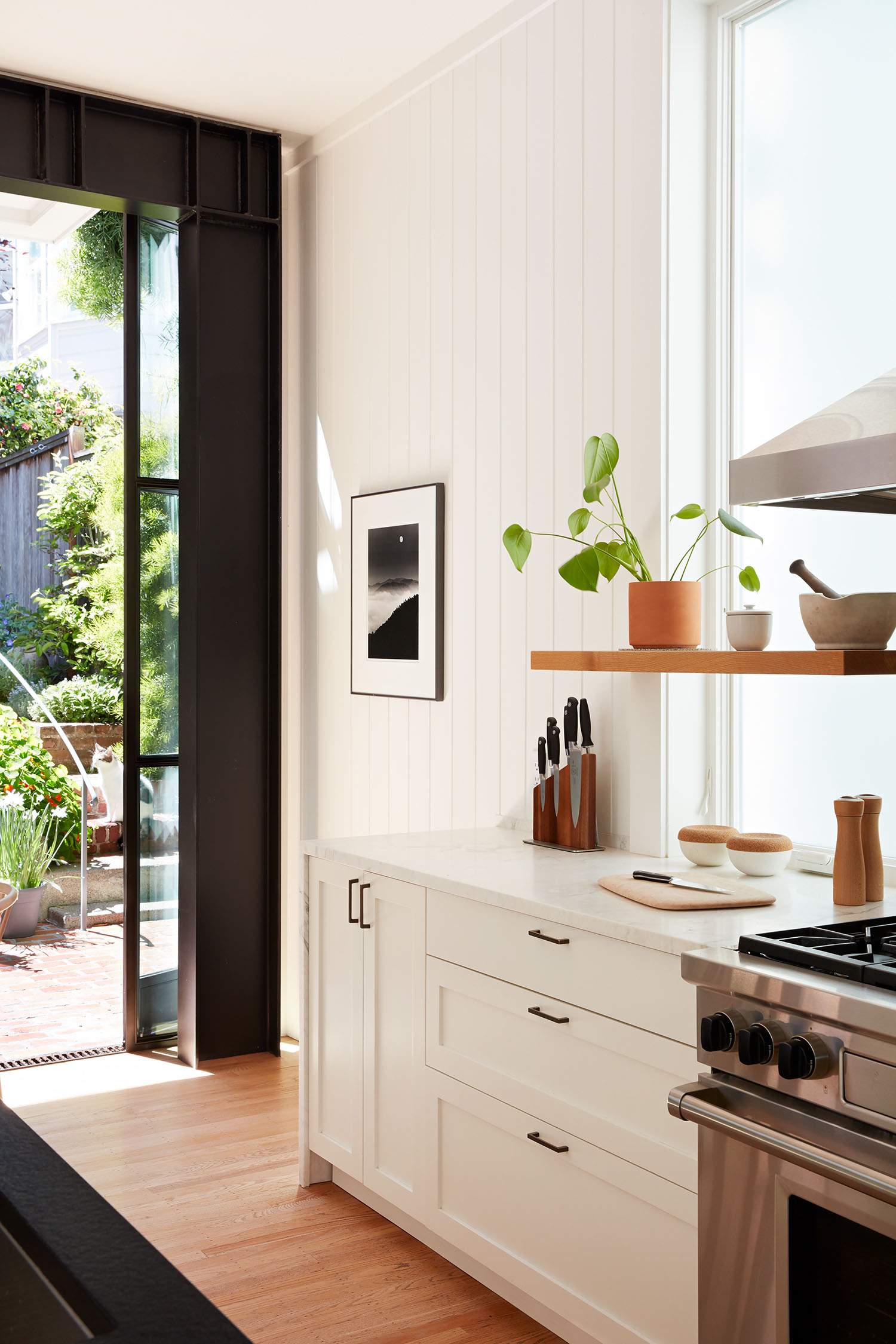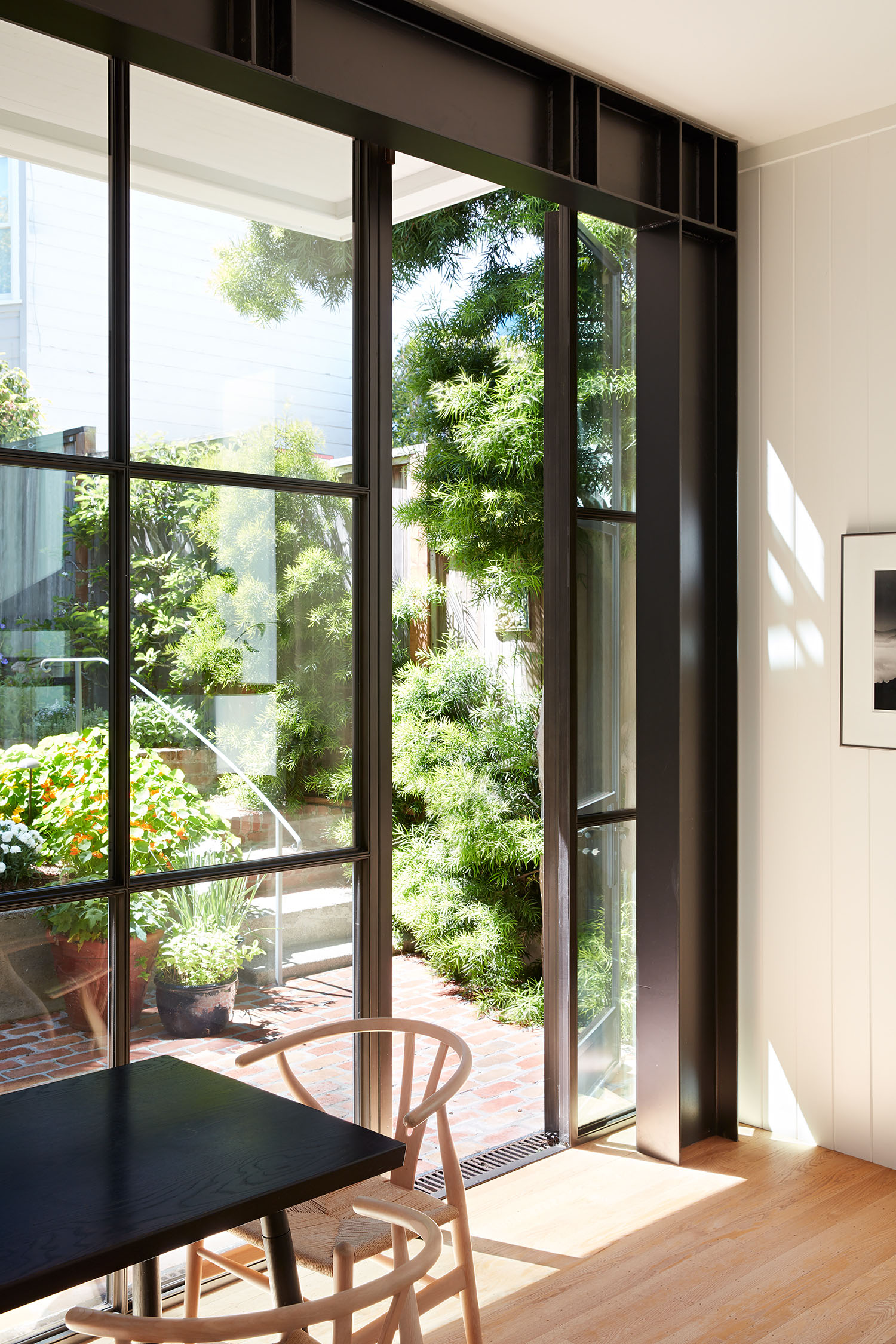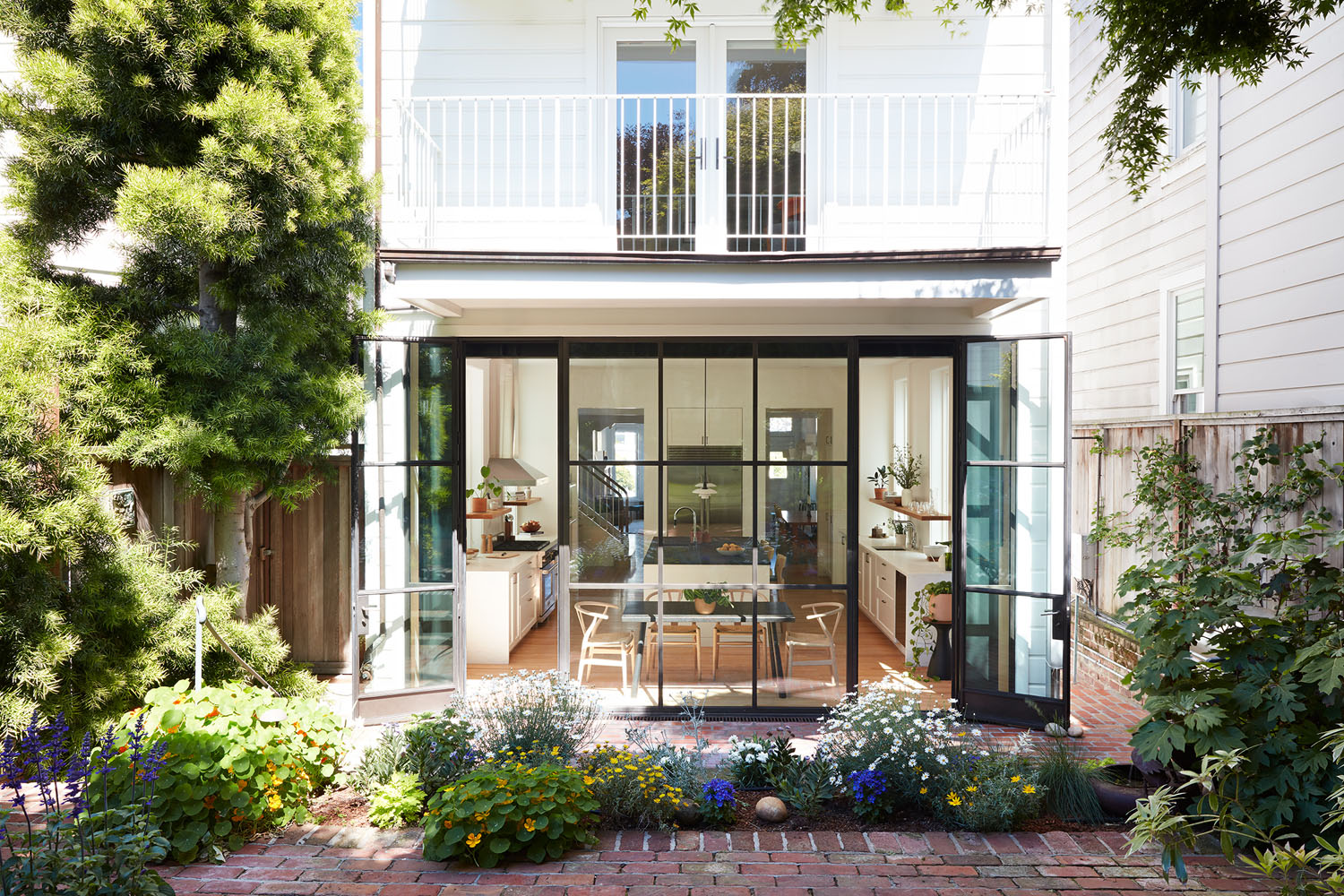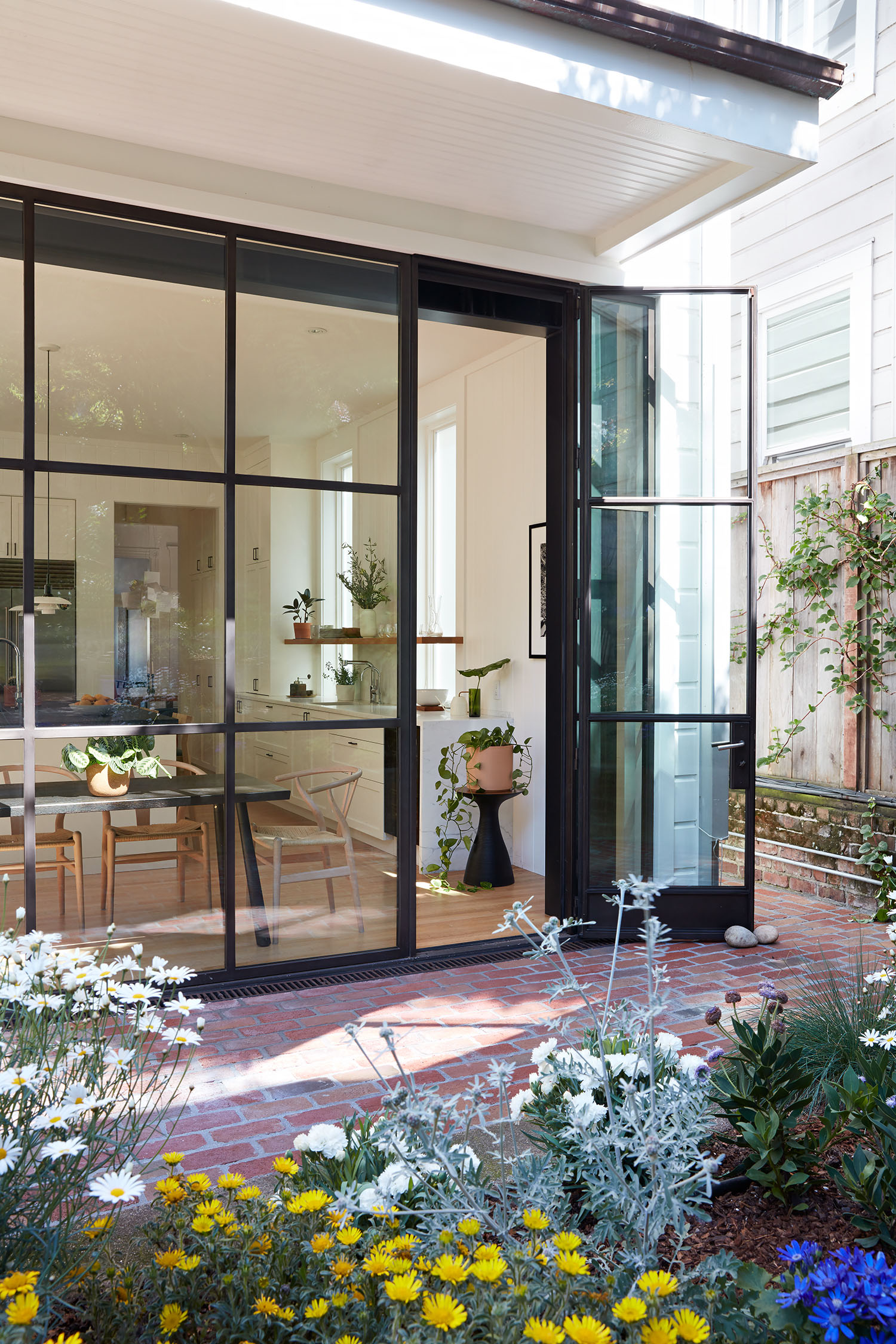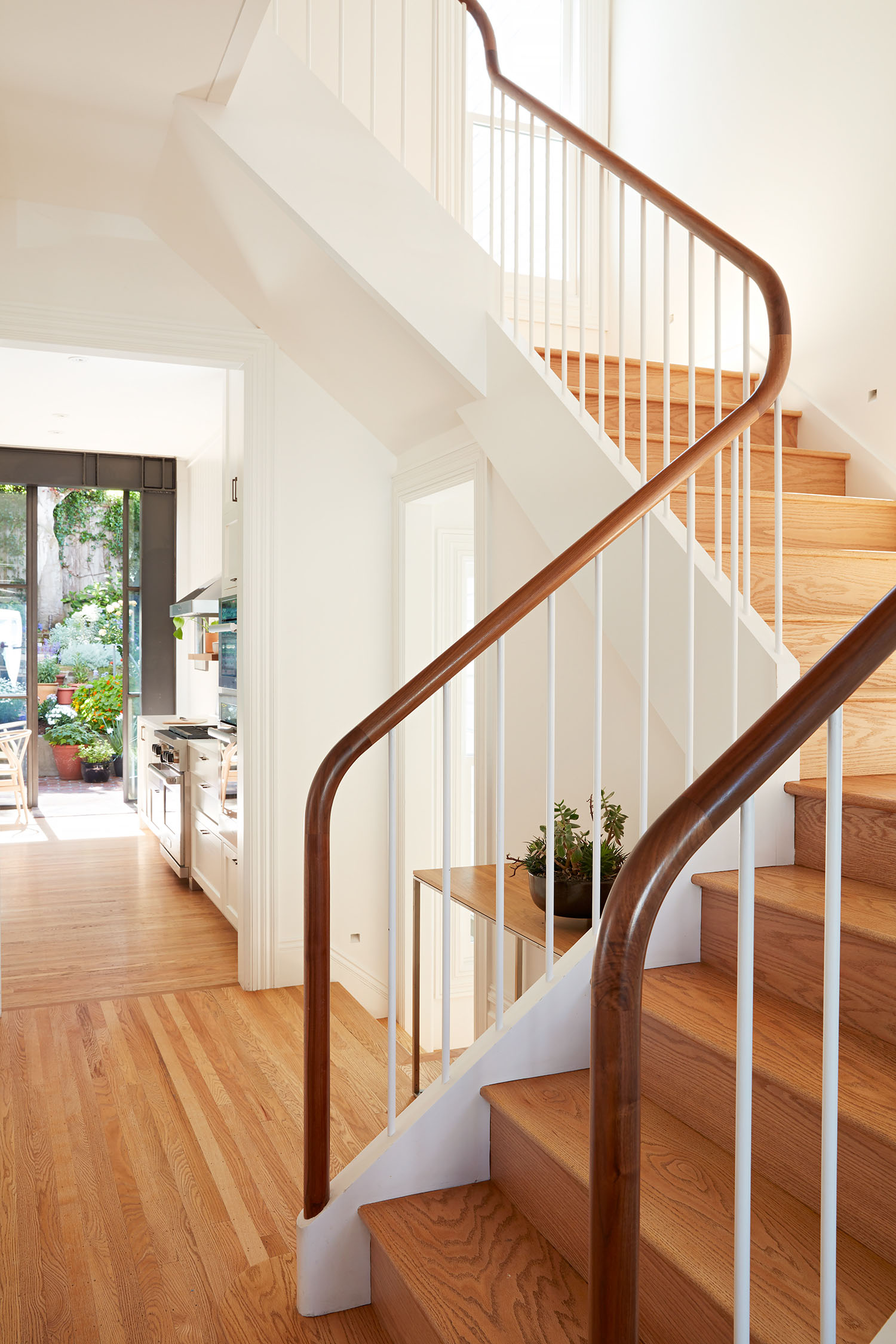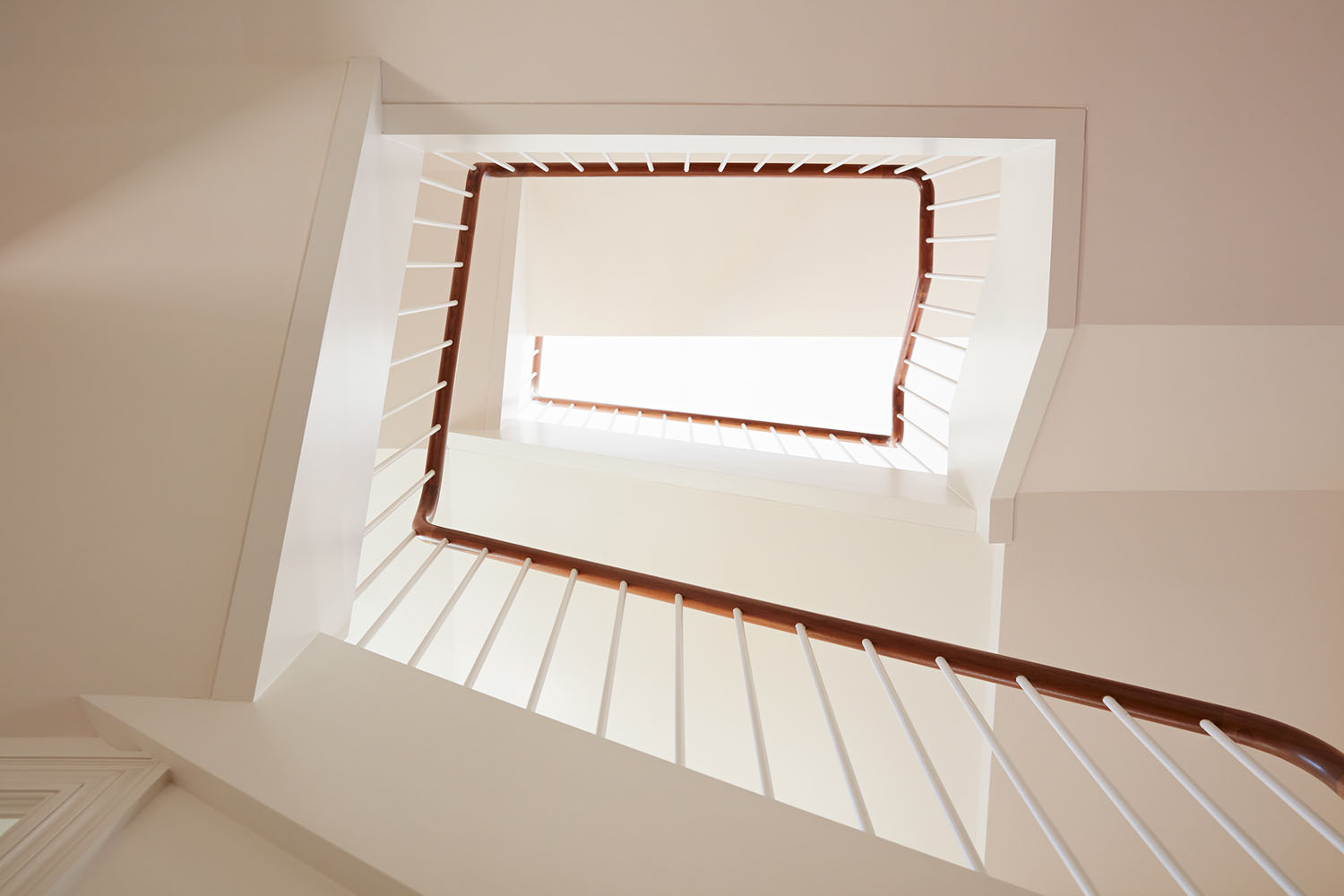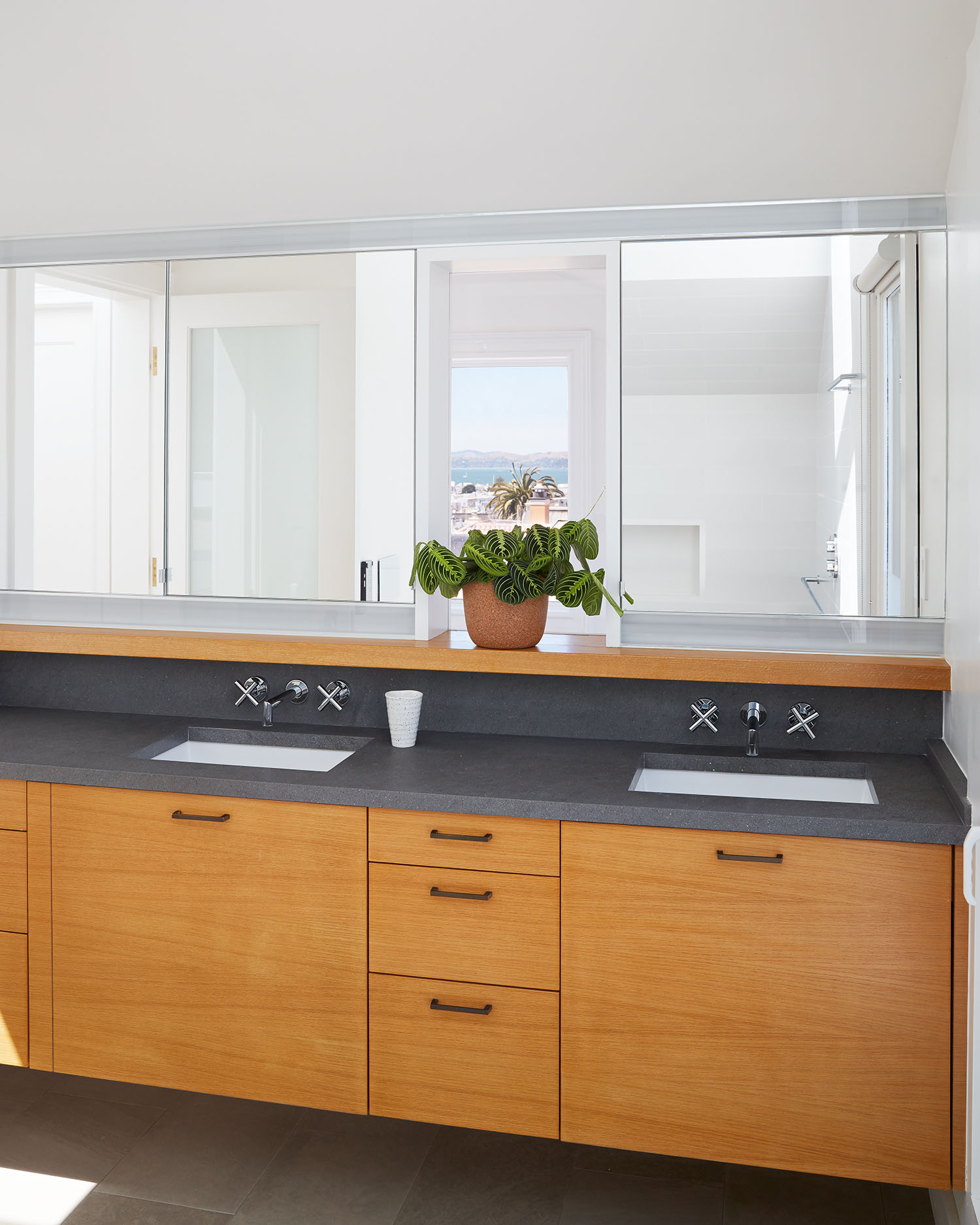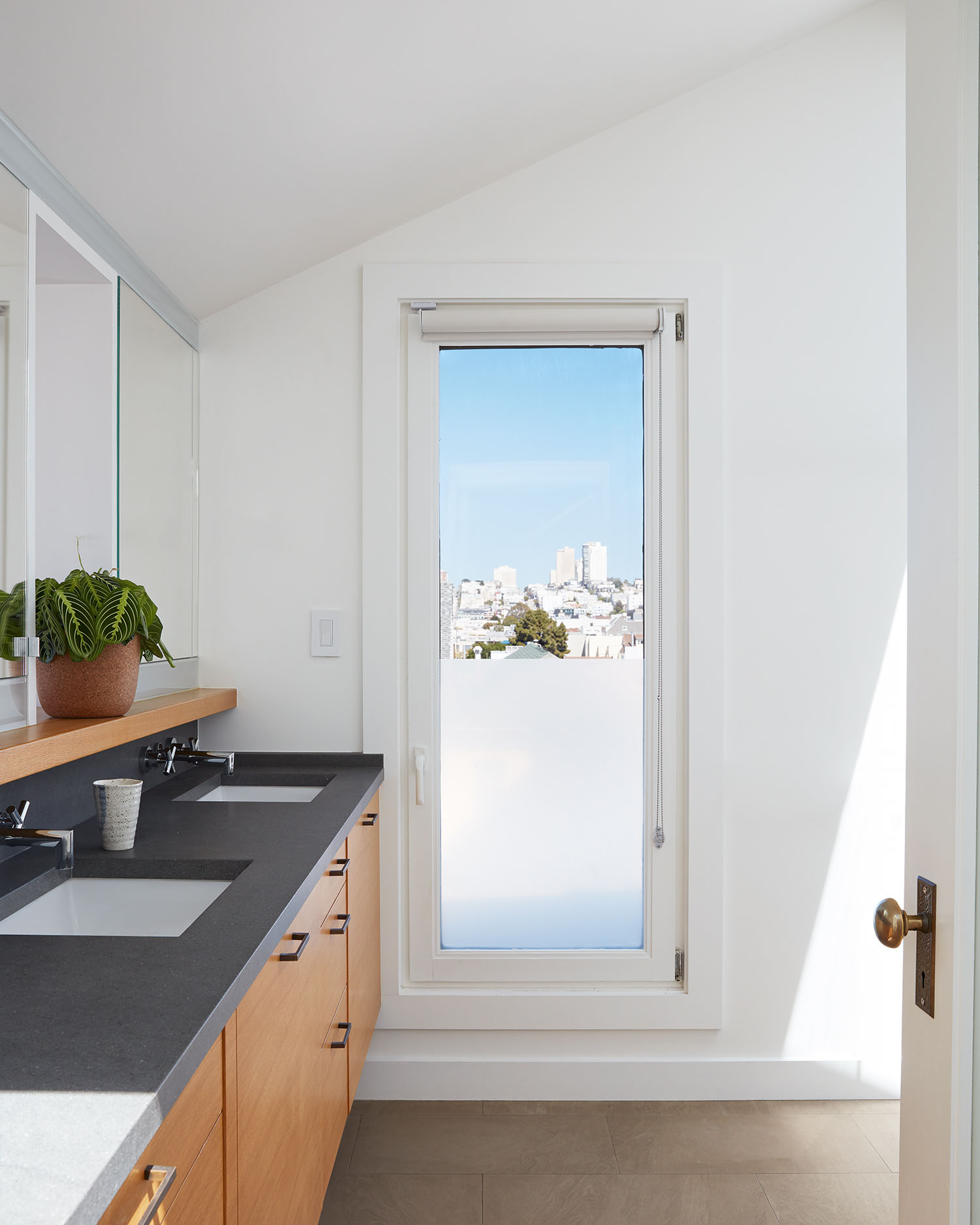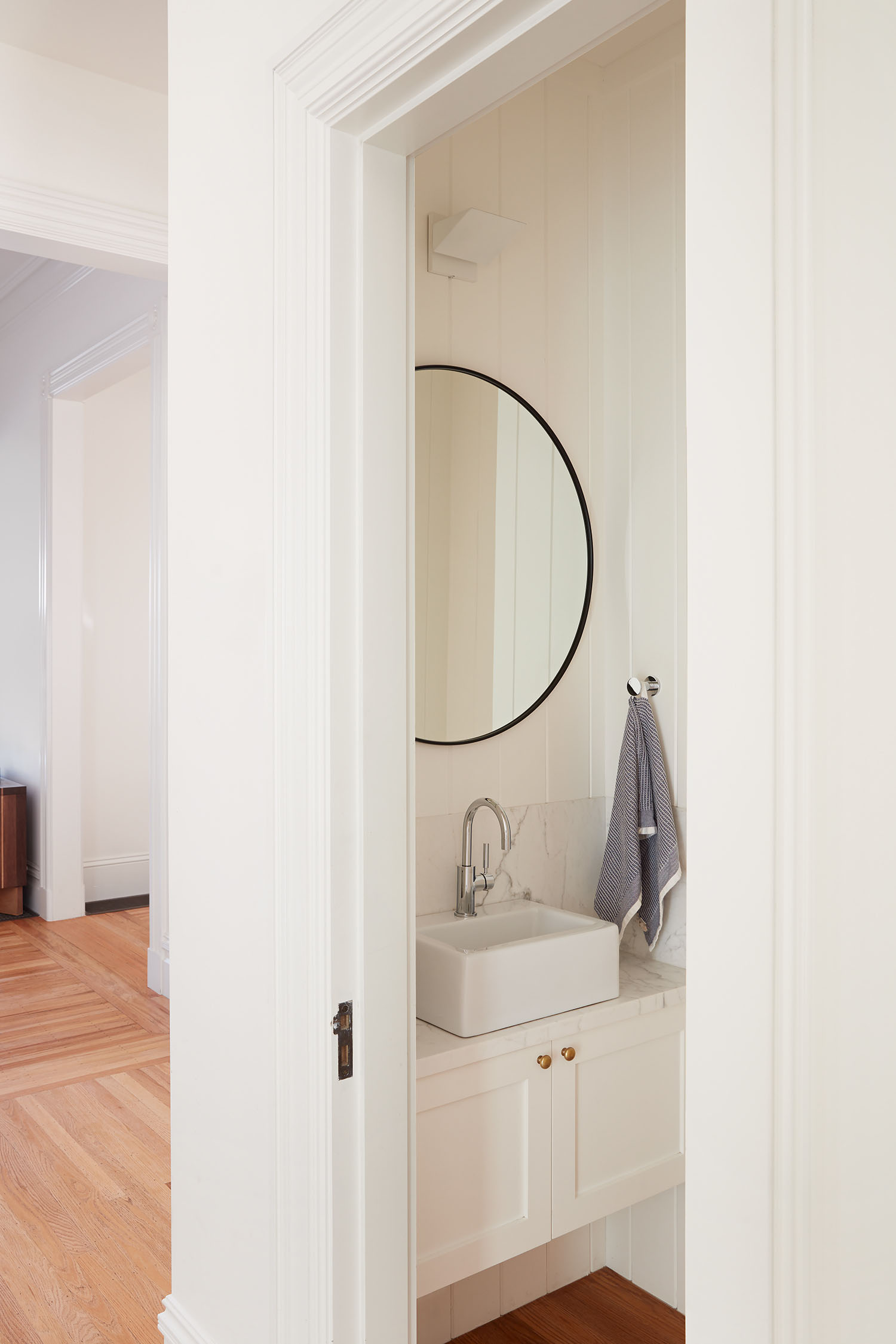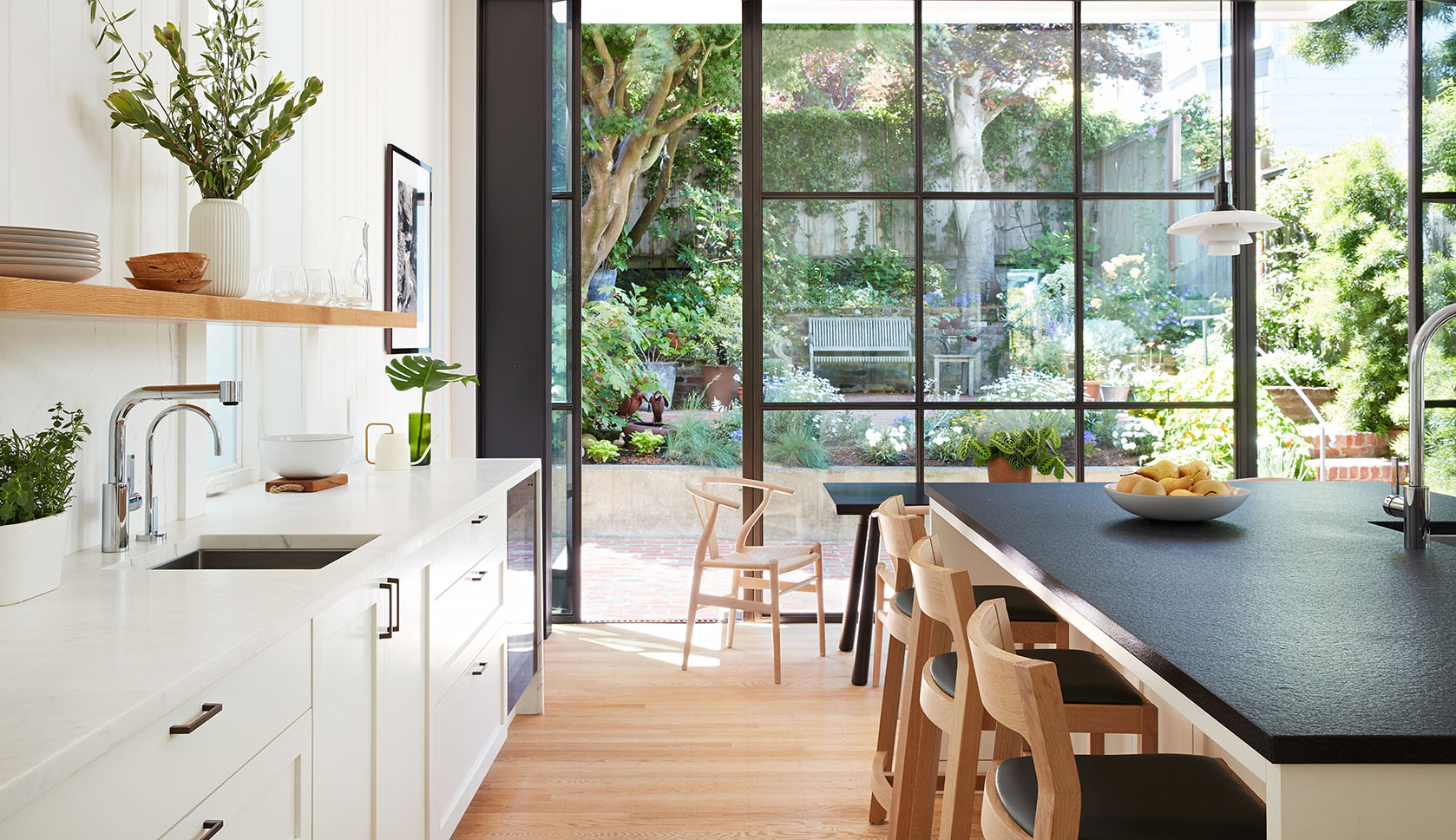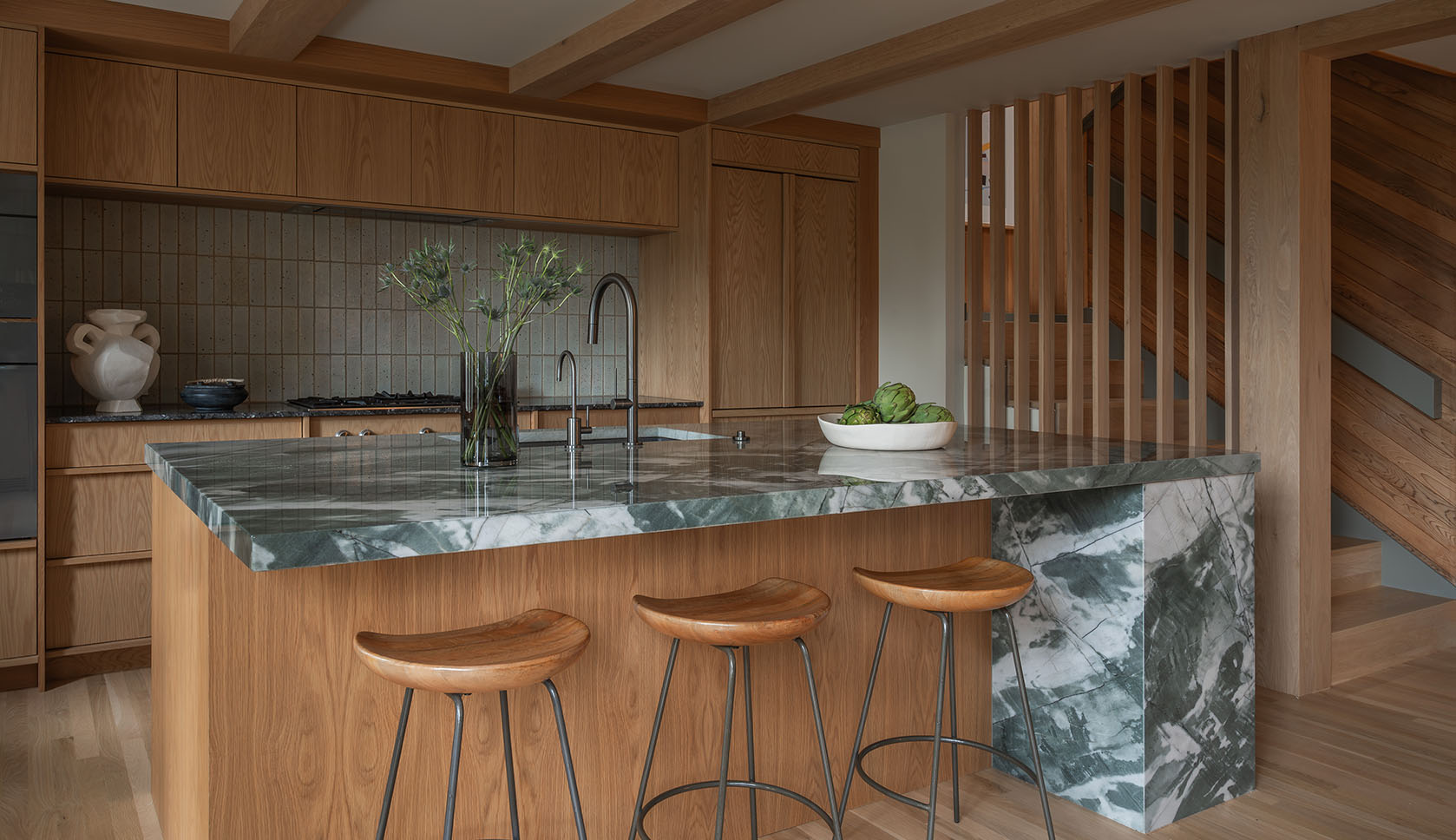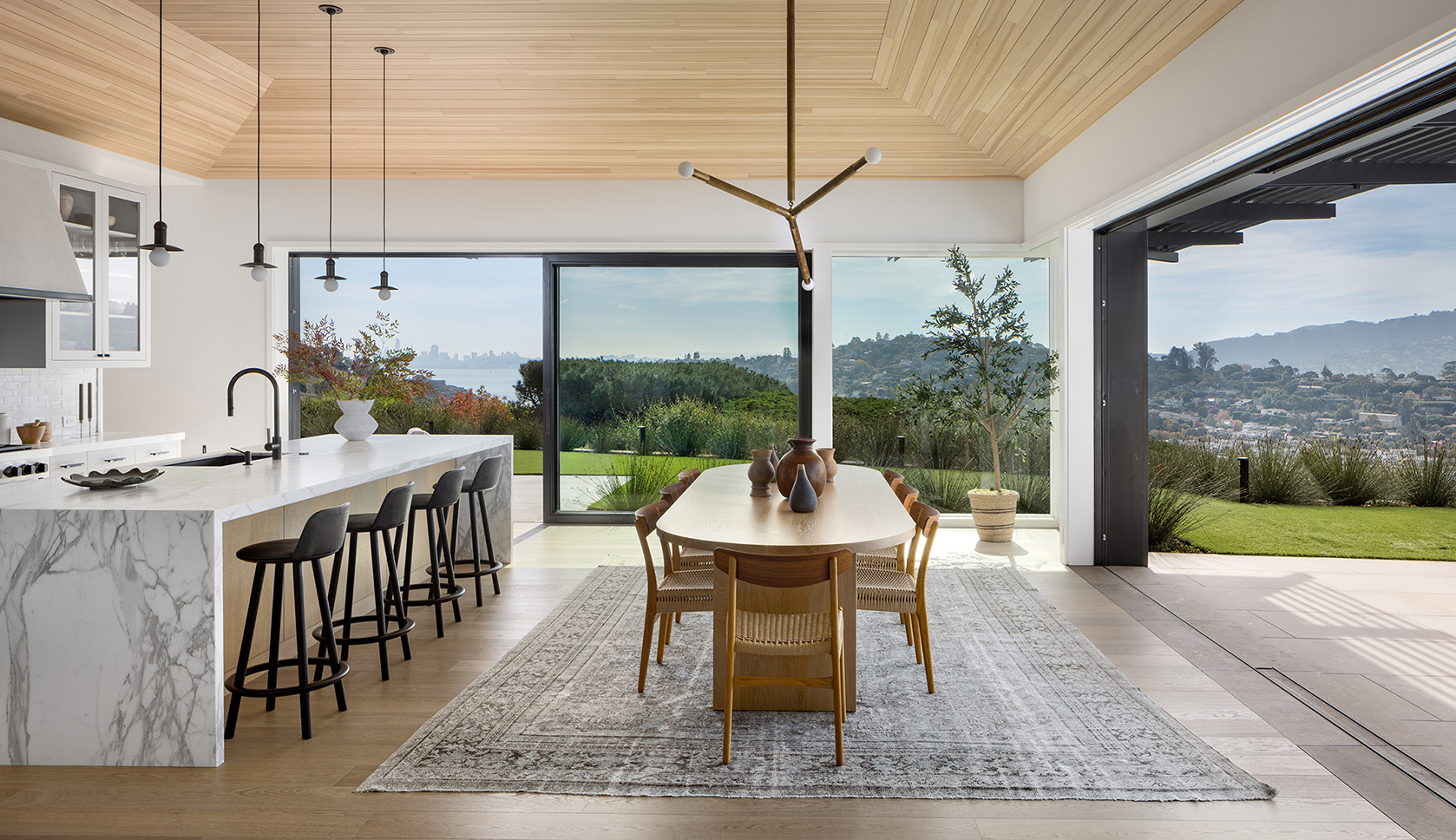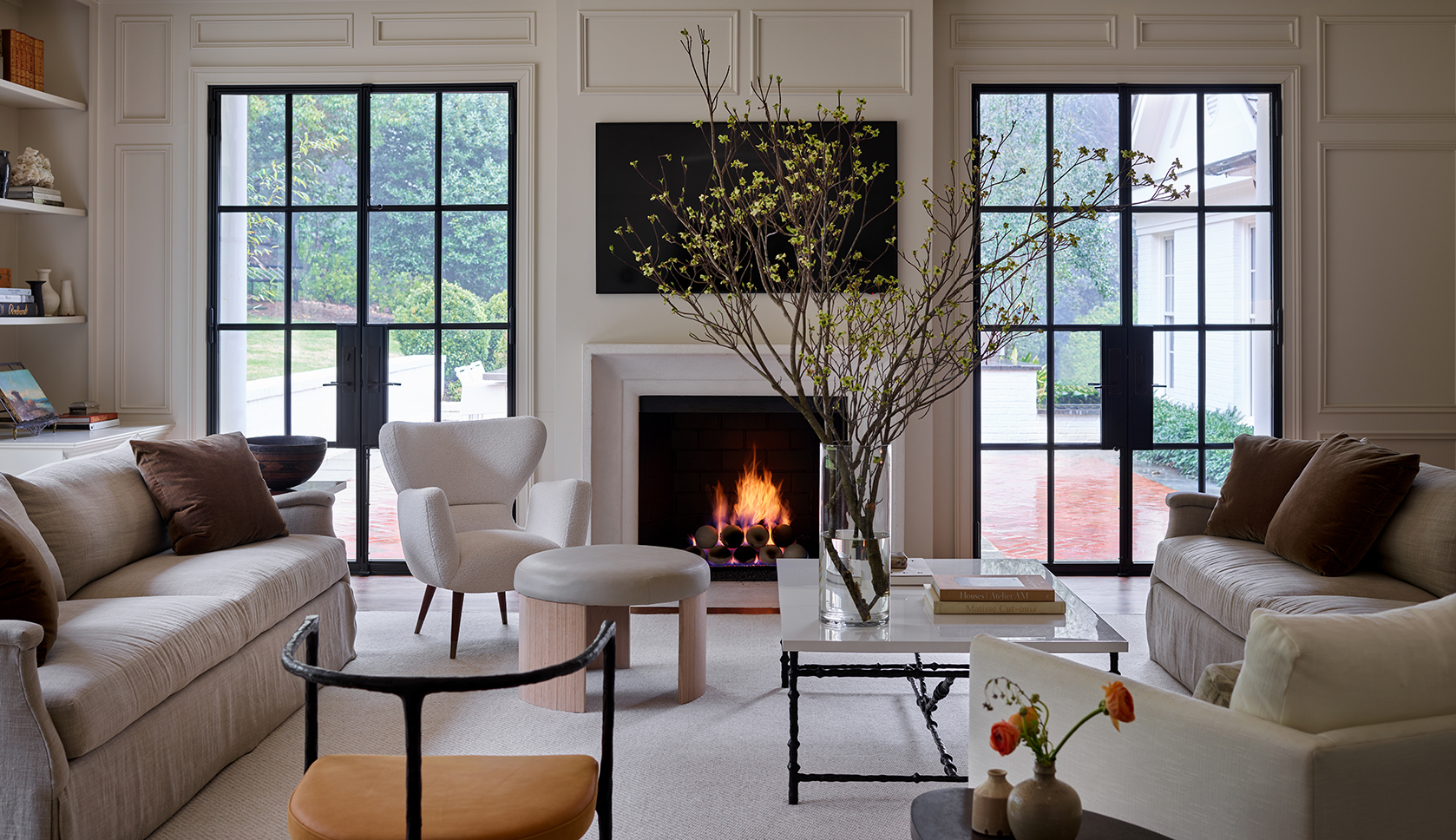Good things come to those who wait, and in the case of this San Francisco renovation, ten years was the magic number. “The clients are a very down to earth, unassuming couple with a dog and two cats who enjoy good company, music, and conversation,” architect Malcolm Davis says. “The husband works in biotechnical research and the wife is a practicing artist, and they’d lived here a decade before embarking on a renovation.” There were many aspects of their home that they loved and had sentimental value, and it was important to them that those be recognizable after the remodel. “However, they were also very familiar with the aspects of the home that they wanted to change and are very happy with the resulting ‘best version’ of their long-time home,” Malcolm explains.
The design intent was to create better sight lines, movement, and connections throughout the house, which in turn dramatically increased the amount of natural light inside. They also hoped to modernize the kitchen and bathrooms, and visually celebrate the historic Thomas Church garden in the back.
The kitchen serves as a bridge in both space and time—the design and materiality reflects its importance as an in-between space, and connects the interior to the garden. It also brings in modern amenities like appliances by Subzero, Wolf, and Miele. With floor-to-ceiling steel windows and doors, it acts as a glassed-in porch, funneling light deeper into the living spaces and highlighting the natural beauty.
In the primary bathroom, large-format matte white tile walls, limestone tile floors, basalt counters, and white oak cabinets add plenty of texture. “The Clients have an unobstructed view of the bay and Tiburon from their bedroom along with a view towards Russian Hill,” the architect shares. “One of the main design objectives was to reconfigure the bathroom and closet to better capture these critical views. We also added an interior window at the bathroom vanity between custom mirrored cabinets that looks over the new multi-story stair and at the view bay beyond.”
The largest challenge the architectural team faced was executing said four-story staircase, a unique piece that connects all levels of the home. “A vertical addition by a previous owner failed to adjust the interior circulation of the home, the added fourth floor felt largely disconnected and there was no visual connection or light shared between levels,” Malcolm says. “MDa completely replaced the disjointed series of narrow and dark staircases with a single stacked volumetric stair that filters light from a skylight at the roof level throughout the home.” The new staircase is crafted of white oak treads and risers, painted metal pickets, and a stain-grade sweeping walnut handrail that was made by a local craftsman.The end result ensures every “new” checklist item was met, while honoring the spirit of the Victorian home. “The house is an infinitely more successful entertaining space, a light filled place to gather with their grandchildren and extended family,” Malcolm concludes.
